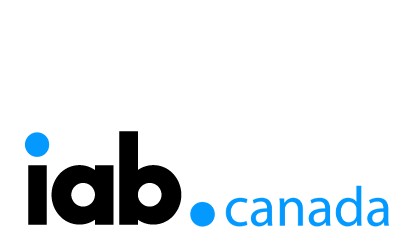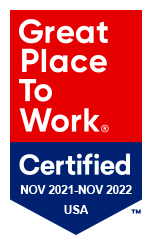Why Disruption isn’t Valuable
for Agencies, but Time is
How Ad Tech gives Agencies
Valuable Time to Work more Efficiently

July 28th, 2023
As agencies seek a competitive edge and strive to deliver high-quality results for their clients, they are looking to save time by optimizing workflows and processes with new tech solutions.
These solutions are often sold with the promise of more transparency and efficiency but with the caveat that everything needs to be done differently. Disruption of the processes is considered an outcome in and of itself. And with thousands of ad tech solutions and growing lists of client demands, agencies’ tech stacks have become increasingly complex — disrupting rather than simplifying their workflows.
“Brands have more demands because there are more channels, more audiences and more data capabilities,” said Oz Etzioni, co-founder and CEO of Clinch. “There’s always room for agencies to improve, and the best way to do that is to understand and identify what is the right technology that will enrich and enhance what you’re doing now.”
The most valuable solutions include time-saving as a central proposition — automating routine tasks, streamlining workflows, providing real-time insights into campaign performance and facilitating collaboration.
Agencies looking to improve their tech stack need to identify modifiable, upgradeable solutions that feature a plug-and-play core operating system to enable those components to work seamlessly together. This ensures the tech stack will save time in the long run rather than straining that valuable resource.
“Any solution that doesn’t value itself in terms of time saved may sound great but could make things a lot worse. Using interoperability as a guiding principle will save time, which is the only currency that matters in the agency world,” Etzioni said. “We all get time in equal measure. The only way for an agency to increase its available time to do work is to hire more people, which is expensive and introduces its own inefficiencies around process and communication.”
Without seamless tech integration, agencies lose time and money
Ad tech stacks often include tools for campaign management, audience targeting and segmentation, media buying, creative production and analytics. These are rarely interoperable components, and the lack of interoperability means more complexity, less flexibility and lost time.
Further adding stress to tech stacks is agencies’ reliance on internal proprietary tech solutions as part of their ecosystems. For instance, research shows that 49% of agencies own and operate their own technology to carry out programmatic buying, while another 34% use a combination of their own technology and third-party solutions. This underscores the importance of integration and coexistence between ad tech solutions.
“Agencies understand they need certain tech solutions, and they shouldn’t be afraid of them,” Etzioni said. “It’s an important decision when you choose to bring on a partner that’s going to have to integrate and work seamlessly across all of your entities and all of your internal tech products and solutions.”
With this in mind, the potential for downtime and error is a significant concern for agencies, explained Etzioni, and integrating new point solutions into tech stacks already built from many parts can be costly and time-consuming. As previously reported by Digiday, challenges organizations face during the integration process include extended timelines and avoiding going dark.
“Integration and IT is always a big fear for agencies. Their twin goals are avoiding failures and having new additions make everything better rather than more difficult,” Etzioni said. “If people on the ground have to spend more time to take advantage of added features, they won’t get used. The magic goal is to use new tech to increase capability and efficiency at the same time while changing as little about the day-to-day process as possible.”
How interoperability facilitates collaboration among agency teams and tech
Interoperability saves agencies time and money by streamlining workflows, enhancing cross-team collaboration and ensuring data consistency across different systems.
“The more complex the agency’s tech stack becomes, the more important interoperability becomes as an evaluation criterion when selecting subsequent third-party partners to plug in,” said Etzioni. “At the end of the day, if the outcome is great, but it creates more work, then what have we done? The whole idea of an interconnected tech stack is efficiency — to make things faster and better.”
Faster and better applies to more than streamlined workflows and campaign execution. Beyond reducing friction with more efficient overall operations, interoperable tech stacks foster collaboration among different disciplines and departments while team members gain more bandwidth for critical and strategic thinking.
Creating a more productive, collaborative and fulfilling work environment leads to more successful campaigns for clients, explained Etzioni, and ultimately fuels growth. According to research from IBM, interoperability is an enabler for 29% more revenue growth.
Etzioni cautions agencies not to chase integrations based on specific client demands but instead focus on long-term agency strategy. The key is working with partners to build a stack that fits business needs, not a single client’s preferred technology.
As agencies identify their ideal tech partners, testing processes to ensure these partners work well across different clients and industries is essential. Agencies are also considering their tech stacks’ capabilities for data syncing, scalability, future-proofing, security, compliance, vendor support and documentation. As Etzioni explained, the goal is to integrate tech stacks across teams for operations, data, analytics, creativity, etc. — saving agencies valuable time through innovation.
“Agencies should be thinking long-term and turning to partnerships that are flexible and agile,” Etzioni said. “Efficiency is always at the heart of the equation, and many agencies are starting to look for a tech partner’s ability to consolidate multiple-point solutions into a unified offering.
“For us as a tech company, it’s really important for us to have conversations with our agency partners and really get to the bottom of what they need,” he added. “By identifying the challenges, we can build them the tech stack they need. That’s where innovation comes in.”



